The average roof replacement in the U.S. takes about 1 to 3 days. But that estimate can jump to a full week or longer, depending on your roof’s size, shape, weather and material. But over time, wear and damage are inevitable. When signs of aging or leaks begin to appear, a full roof replacement becomes necessary. At that point, one of the first questions homeowners ask is: “What Is Average Roof Replacement Time?”
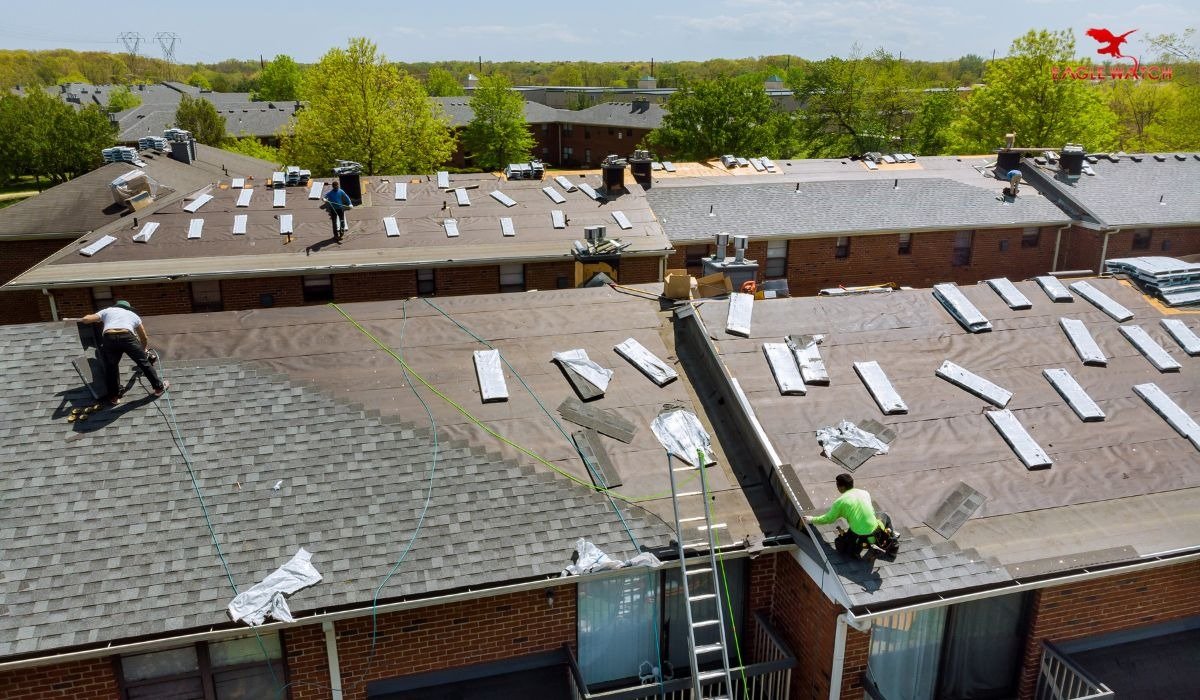
How Long Does Roof Replacement Really Take?
| Roof Type / Project Condition | Average Time |
|---|---|
| Small, simple roof (under 1,500 sq ft) | 1 day |
| Medium-sized home (1,500–2,500 sq ft) | 1–2 days |
| Large home or complex roof (2,500+ sq ft) | 2–4 days |
| Asphalt shingle roof | 1–3 days |
| Metal roof | 2–5 days |
| Clay or concrete tile roof | 5–10 days |
| Slate roof | 6–12 days |
| Flat roof (TPO, EPDM, etc.) | 2–3 days |
| Roof with skylights, chimneys, or steep pitch | 3–6 days |
Average Roof Replacement Time:
| Roof Type / Size | Estimated Time |
|---|---|
| Small home (1,000–1,500 sq ft) | 1 day |
| Medium home (1,500–2,500 sq ft) | 1–2 days |
| Large home (2,500–3,500+ sq ft) | 2–4 days |
| Complex roof (many angles, chimneys, skylights) | 3–5+ days |
| Tile, Slate, or Wood Shake Roof | 5–10 days |
| Flat Roof (commercial-style) | 2–3 days |
- Weather — Rain, snow, or high wind means no roofing work.
- Roof condition — If your old roof has rotted wood or structural damage, extra repair time is needed.
- Material type — Asphalt shingles go fast. Tile or metal takes longer.
- Crew size — More workers = faster job.
- Permits or inspections — Some cities require extra steps that take time.
Basic Roof Replacement Steps:
- Remove old shingles
- Inspect roof decking
- Repair damaged wood
- Install underlayment
- Place new shingles or material
- Clean up and final check
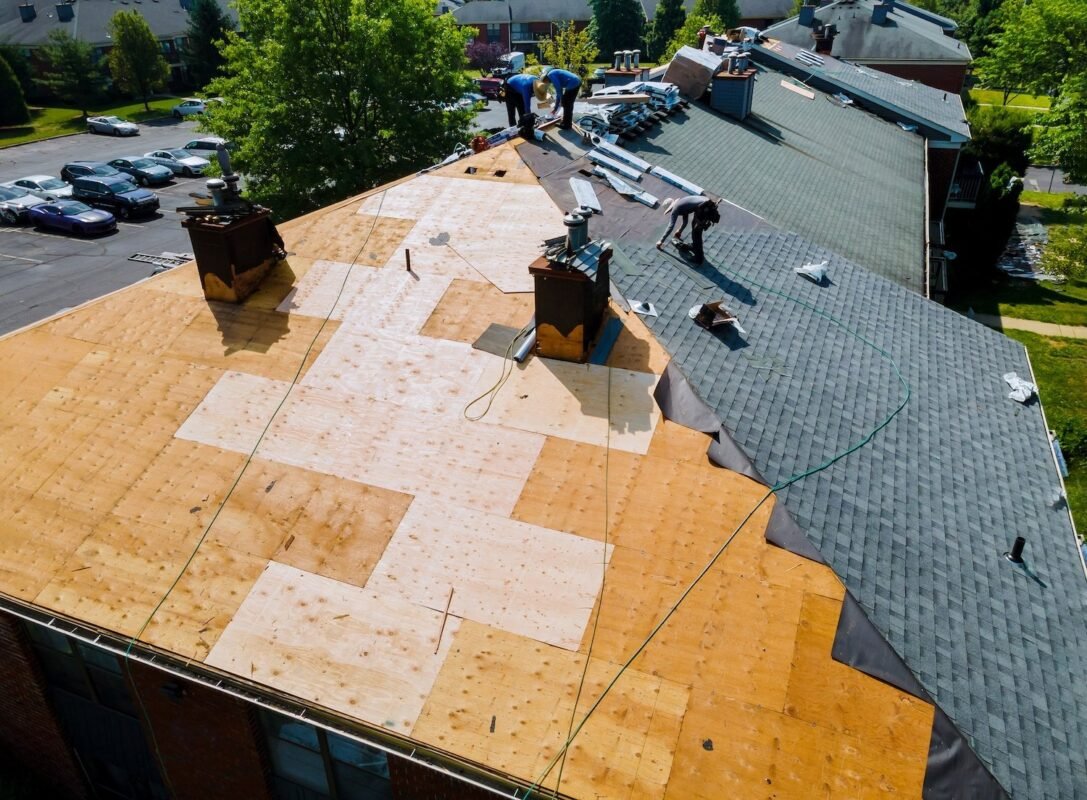
By House Size Roof Replacement (With Asphalt Shingles)
| Home Size (sq ft) | Average Replacement Time |
|---|---|
| Under 1,000 sq ft | 1 day |
| 1,000–1,500 sq ft | 1 day |
| 1,500–2,500 sq ft | 1–2 days |
| 2,500–3,500 sq ft | 2–3 days |
| Over 3,500 sq ft | 3–5 days |
By Roof Material Type Average Roof Replacement Time In Brooklyn
| Material Type | Replacement Time | Why It Takes That Long |
|---|---|---|
| Asphalt Shingles | 1–3 days | Easy to install, lightweight, common choice |
| Metal Panels | 2–5 days | Requires precision cuts, more fastening work |
| Clay/Concrete Tile | 5–10 days | Heavy, fragile tiles; complex underlayment needed |
| Slate Shingles | 6–12 days | Very heavy and time-consuming |
| Wood Shake | 5–8 days | Needs careful installation and layering |
| Flat/TPO/EPDM Roof | 2–3 days | Fewer layers, but needs sealing work |
By Roof Complexity Roof Replacement Time In Brooklyn
| Roof Type / Shape | Time Needed | Details |
|---|---|---|
| Flat Roof | 2–3 days | Easier access, faster replacement |
| Simple Gable Roof | 1–2 days | Straightforward layout, minimal valleys |
| Hip Roof with Multiple Angles | 2–4 days | More cuts and seams, more flashing work |
| Roofs with Chimneys, Skylights | 3–5 days | Adds extra time for sealing and detail work |
| Steep Pitch Roof | 3–6 days | Slows down work, safety harnesses needed |
What Factors Affect Roof Replacement Time?
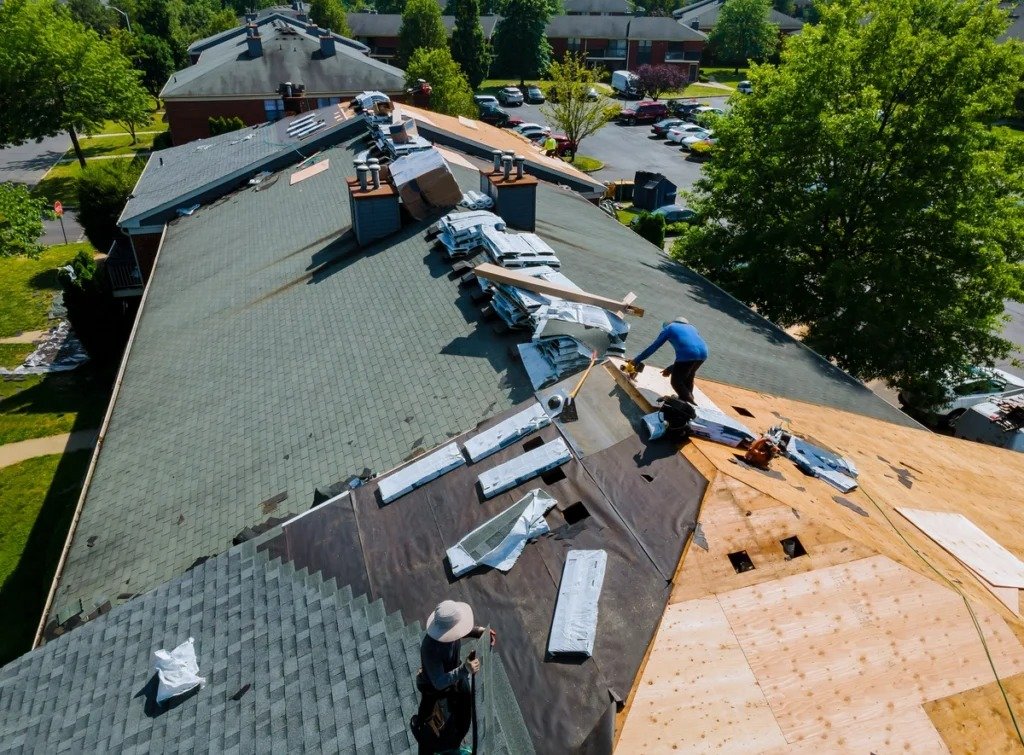
When you hear that a roof replacement “usually takes 1 to 3 days,” that’s a rough average not a promise. The real timeline depends on a handful of things that can speed things up or slow them down quite a bit.
Here’s what really affects how long your roof replacement will take:
1. Roof Size
This one’s pretty straightforward. A small roof can be done in a day. A large one? That’s going to take longer, even with a full crew. Think of it like mowing a lawn, the bigger the yard, the more time it takes. A 1,500-square-foot roof is much quicker than a 3,500-square-foot one.
2. Roof Pitch and Shape
Is your roof steep or tricky to walk on? Got a lot of angles, peaks, or valleys? These details slow everything down. Crews need extra time for safety and precision. Complex roofs with chimneys, skylights, or dormers take more planning and effort than a simple, flat layout.
Pro Tip: A steep or multi-level roof can easily add a full day or more to your timeline.
3. Type of Roofing Material
Some materials go on fast. Others? Not so much.
- Asphalt shingles are quick and easy to install.
- Metal panels take more time to align and fasten.
- Slate or tile roofs are the slowest, they’re heavy, fragile, and must be placed one piece at a time.
The more advanced the material, the more time it takes to install it right.
4. Tear-Off vs. Overlay
If your roof is being completely torn off (which is most common), it takes longer than if you’re just adding a new layer over the old one. Tear-offs involve more cleanup, more hauling, and more inspection.
But even though overlays can save time, they’re not always allowed and they might not be the best option for long-term results.
5. Weather Conditions
Rain, high winds, snow, or even extreme heat can shut down a roofing project fast. Crews can’t work safely in those conditions, and wet surfaces are dangerous. Even if the forecast looks good, unexpected weather delays happen.
6. Structural Damage
If the crew pulls off your shingles and finds rotten decking, water damage, or mold, that has to be fixed before anything else. And that adds hours or even an extra day or two to the schedule.
7. Permits and Inspections
In many areas, roofing permits are required. Sometimes inspectors need to come out before, during, or after the work. If the city is backed up or the inspection gets delayed, so does your project.
What Are the Stages of a Roof Replacement?
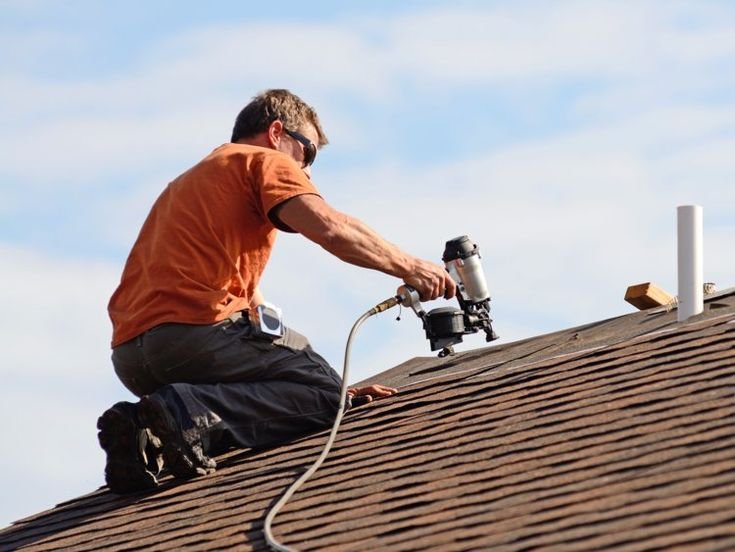
Knowing the full timeline from the very beginning makes everything easier to plan. Your roof replacement doesn’t just start when workers show up, it starts way before that. Here’s a simple breakdown of what happens, step by step.
| Stage | Average Duration | Key Activities |
| 1. Initial Consultation & Quoting | 1-2 weeks | Researching contractors, scheduling inspections, receiving and comparing detailed quotes. |
| 2. Contract & Scheduling | 1-4 weeks | Signing the contract, making a down payment, and getting on the contractor’s schedule. |
| 3. Material Ordering & Delivery | 1-3 weeks | Contractor orders all necessary materials (shingles, underlayment, flashing). Delivery to your home. |
| 4. On-Site Work | 1-5 days | Tear-off of the old roof, decking inspection/repair, installation of the new roof, and site cleanup. |
| 5. Final Inspection & Payment | 1-2 weeks | Contractor’s final walkthrough, municipal inspections (if required), and final payment. |
The part, before the roof work even starts can take just as long or sometimes longer than the actual job itself. Once you choose a contractor and sign the paperwork, they’ll need to order your materials.
If you’re going with a basic shingle, it might only take a few days. But if you picked a specialty color or a less common style, it could take a few weeks, especially if supplies are backed up. After everything arrives, your materials will usually be dropped off at your home a day or two before the crew gets started.
What Happens During a Roof Replacement?
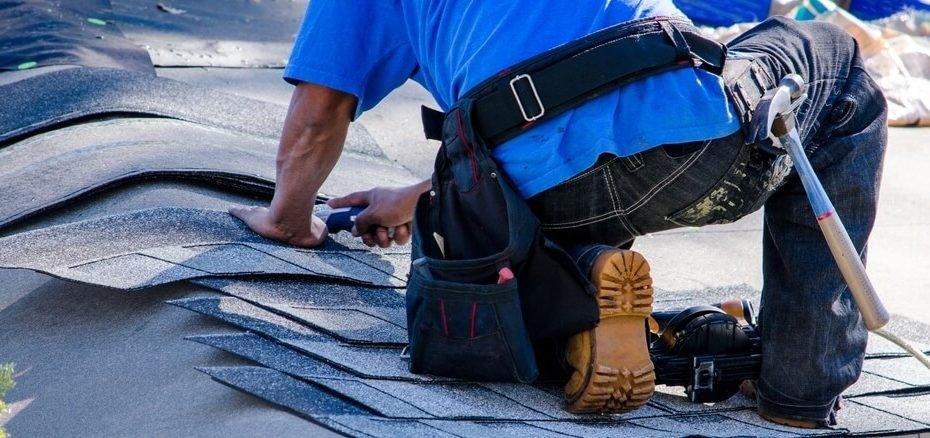
You know it’s more than “just slapping on new shingles.” But what really happens?
Here’s a breakdown of the steps your contractor will follow:
| Step | What Happens | Time Estimate |
| 1. Setup & Prep | Protect landscaping, bring materials | 1–2 hours |
| 2. Tear-Off | Remove old shingles and underlayment | 4–8 hours |
| 3. Deck Inspection | Check for rot, damage, or mold | 1–2 hours |
| 4. Repairs (if needed) | Replace wood or fix problems | 1–2 hours+ |
| 5. Underlayment Install | Add waterproof barrier | 2–4 hours |
| 6. Roofing Material | Shingles, metal, or tile installation | 6–16 hours |
| 7. Flashing & Vents | Install edge, valley, and chimney flashing | 2–3 hours |
| 8. Cleanup & Inspection | Clean up debris, final walk-through | 1–3 hours |
It all starts with the preparation, the crew protects the landscaping and gathers all necessary materials in the spot.
Then they strip off your old shingles and underlayment, tossing the debris into a dumpster on-site.
After that, they’ll take a close look at the wooden decking underneath. If there’s any soft or damaged wood, it gets fixed right away.
Once the deck is solid, they’ll begin building your new roof starting with the drip edge, then adding ice and water shield in the problem areas, followed by felt or synthetic underlayment.
Then comes the main event: your new shingles or roofing material.
After that, they’ll install flashing around chimneys and vents, add ridge caps along the roof peak, and finish with a full cleanup so your yard looks just like it did before they arrived.
What Can Delay a Roof Replacement?
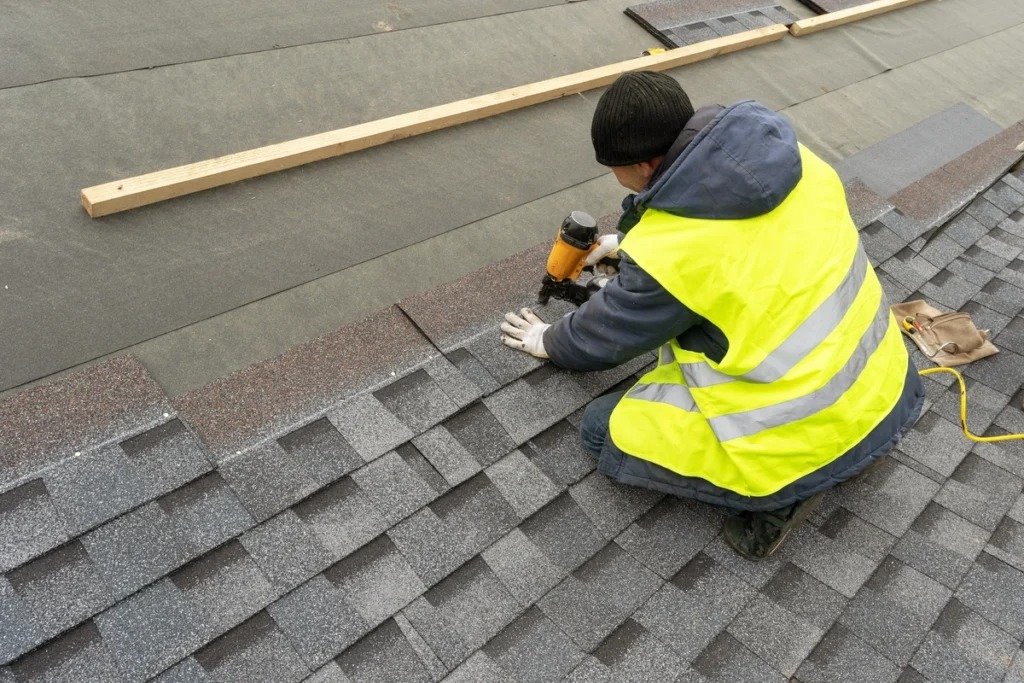
Even with a solid plan, things don’t always go perfectly. A good roofing crew will do their best to stay on schedule, but some delays are just out of their hands. Here are the most common causes of delays:
| Delay Reason | How It Affects the Timeline |
| Bad Weather | Stops all work rain, snow, and wind |
| Hidden Damage | Rot or leaks under shingles = extra repairs |
| Permit Delays | Some cities take longer than others |
| Crew Shortage | Busy seasons (spring/fall) slow scheduling |
| Material Backorders | Specialty items can take 1–2 weeks to arrive |
Pro Tip: Ask your contractor about weather backups and material lead times before signing a contract.
How Can You Speed Up the Process?
You can’t control the weather or the crew’s schedule but there are a few smart things you can do to help keep your roof replacement running on time.
1. Schedule at the Right Time of Year
Spring and fall are the busiest seasons for roofing companies. If you try to book in April or October, you might end up waiting weeks just to get on the calendar.
Instead, consider late summer or early winter. These “shoulder seasons” are often less crowded, and you may be able to get started faster.
Pro Tip: Ask your contractor about their off-peak schedule. You might save time and money by choosing a slower month.
2. Choose Materials That Are Readily Available
The fastest jobs use materials that are already in stock. If you pick a rare color, custom tile, or a specialty finish, you might wait two weeks just for delivery. That’s before any work even starts.
Sticking with standard options, especially for shingles or underlayment can speed things up significantly.
3. Book Early, Not Last Minute
Don’t wait until your roof is leaking or collapsing to make the call. Quality roofing companies often have a backlog, especially in high-demand areas. The sooner you get on their schedule, the better your odds of a smooth timeline.
4. Clear the Work Area Before the Crew Arrives
Make things easy for the roofing team. Move your vehicles out of the driveway. Put away outdoor furniture, potted plants, and yard decorations. Trim any overhanging tree branches if needed.
The less time the crew spends prepping the space, the faster they can get to work.
5. Stay Available for Quick Decisions
Sometimes questions come up during the job, maybe there’s unexpected decking damage, or they need your input on a flashing or vent issue. If you’re reachable by phone or text, you’ll avoid delays caused by waiting for approvals.
6. Double-Check Permit Requirements Early
Ask your roof contractor to confirm if permits are needed for your roof replacement. If the city requires inspections during or after the job, plan for those ahead of time so they don’t slow things down.
When Should You Call a Roofing Company?

If your roof is over 15–20 years old, has leaks, curling shingles, or signs of wear, it’s time. Don’t wait until there’s water in your attic.
S & R General Construction NYC offers full roof replacements across New York City. With experienced crews and fast turnaround times, they’ll get your home protected, quickly and professionally.
Their team can usually schedule a full asphalt shingle replacement in just 2–3 days, from start to finish.
Know More: How Much Does Roof Tarping Cost in Brooklyn NY
Know the Time, Avoid the Headache
Replacing your roof won’t happen overnight but it also shouldn’t drag on forever. Most asphalt roofs wrap up in 1–2 days, while complex ones can take a week or more.
Plan ahead. Ask questions. And choose materials and contractors that match your timeline.
You’re not just replacing shingles, you’re investing in safety, comfort, and peace of mind.
Ready to get started? Talk to Roofing Cost Calculator S & R General Construction NYC and schedule your free roof estimate today. Because when it’s time to protect your home, there’s no time to waste.
Frequently Asked Questions About Roof Replacement Time
How long does a roof replacement usually take?
Most roof replacements take 1 to 3 days. That’s for asphalt shingles on a standard-size home with no major issues. If you have a large or complex roof or choose a material like slate or tile it could take up to a week or more.
Can my roof really be replaced in just one day?
Yes, if your roof is smaller (under 2,000 square feet), has a simple shape, and there are no surprises under the old shingles, a full team can finish in one day. But weather, wood damage, or extra layers can quickly change that.
What slows things down the most?
The biggest delays usually come from bad weather, material delivery problems, or unseen damage under the old roof. Permitting issues or city inspections can also add time, especially in busy areas.
Will I need to leave my house during the roof replacement?
No, you can stay home but it will be noisy. Expect loud hammering and movement on the roof all day. If you work from home or have small kids or pets, it might be a good idea to spend the day elsewhere.
What if it rains while the roof is being replaced?
Roofers plan for this. If rain is in the forecast, they may pause the job and secure a waterproof cover over any exposed areas. They won’t remove more roofing than they can safely cover in one day.
Is it faster to install new shingles over the old ones?
An overlay (new shingles over old) is faster, yes, but it’s not always allowed or recommended. It depends on local building codes, your roof’s condition, and long-term goals. A full tear-off is usually the better choice for durability.

[…] How long does a roof replacement usually take? […]
[…] How long does a roof install take? […]